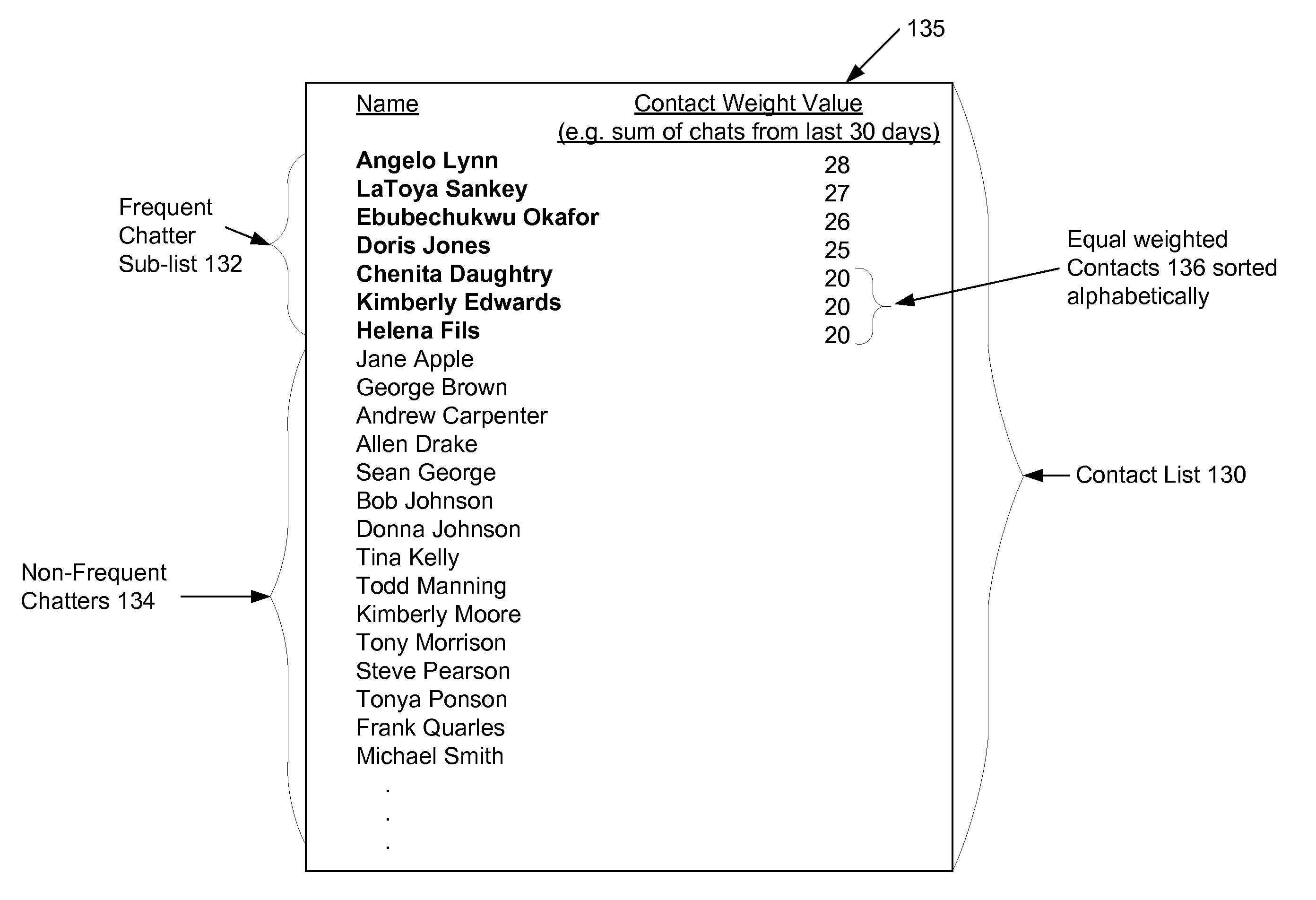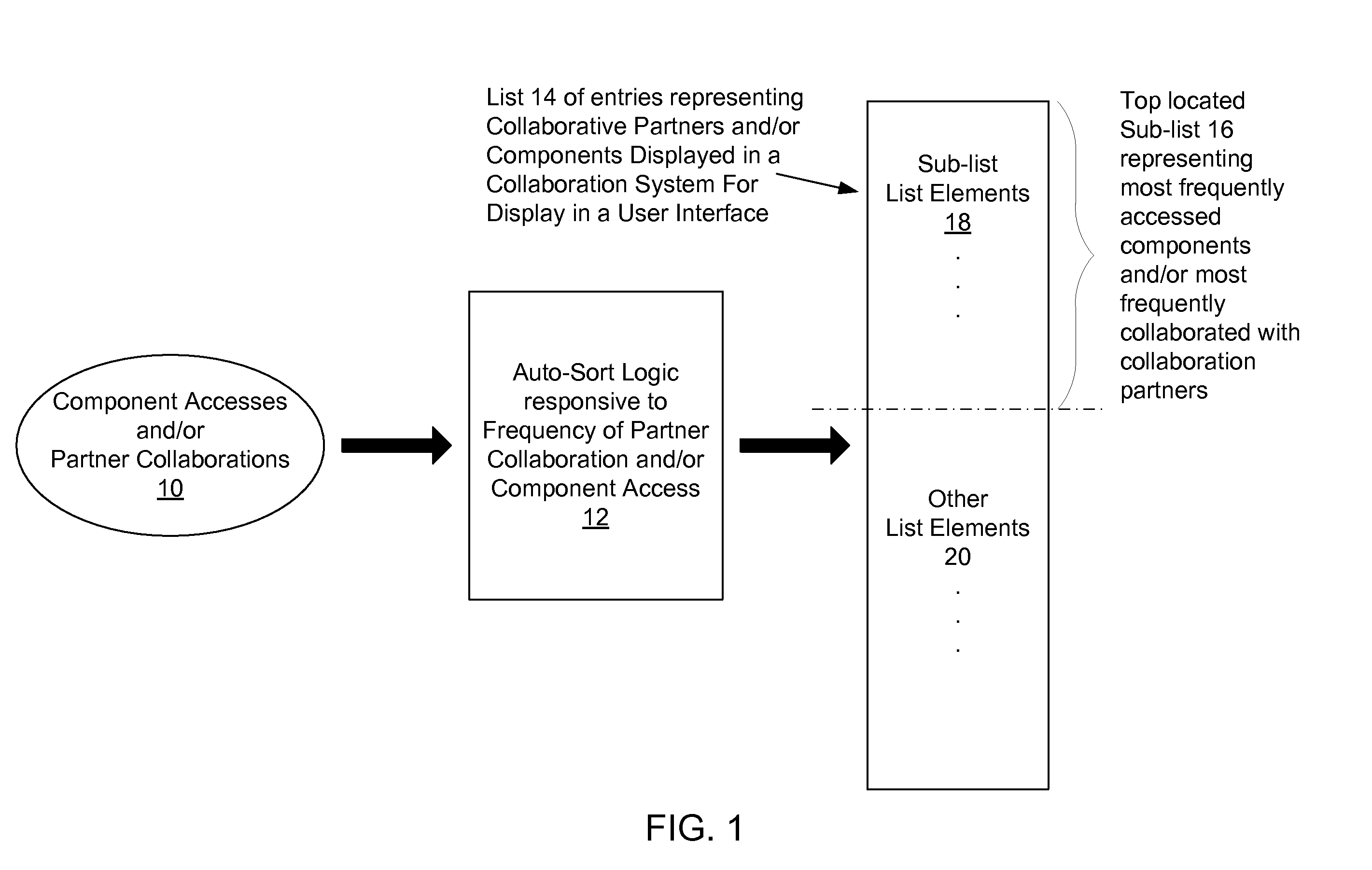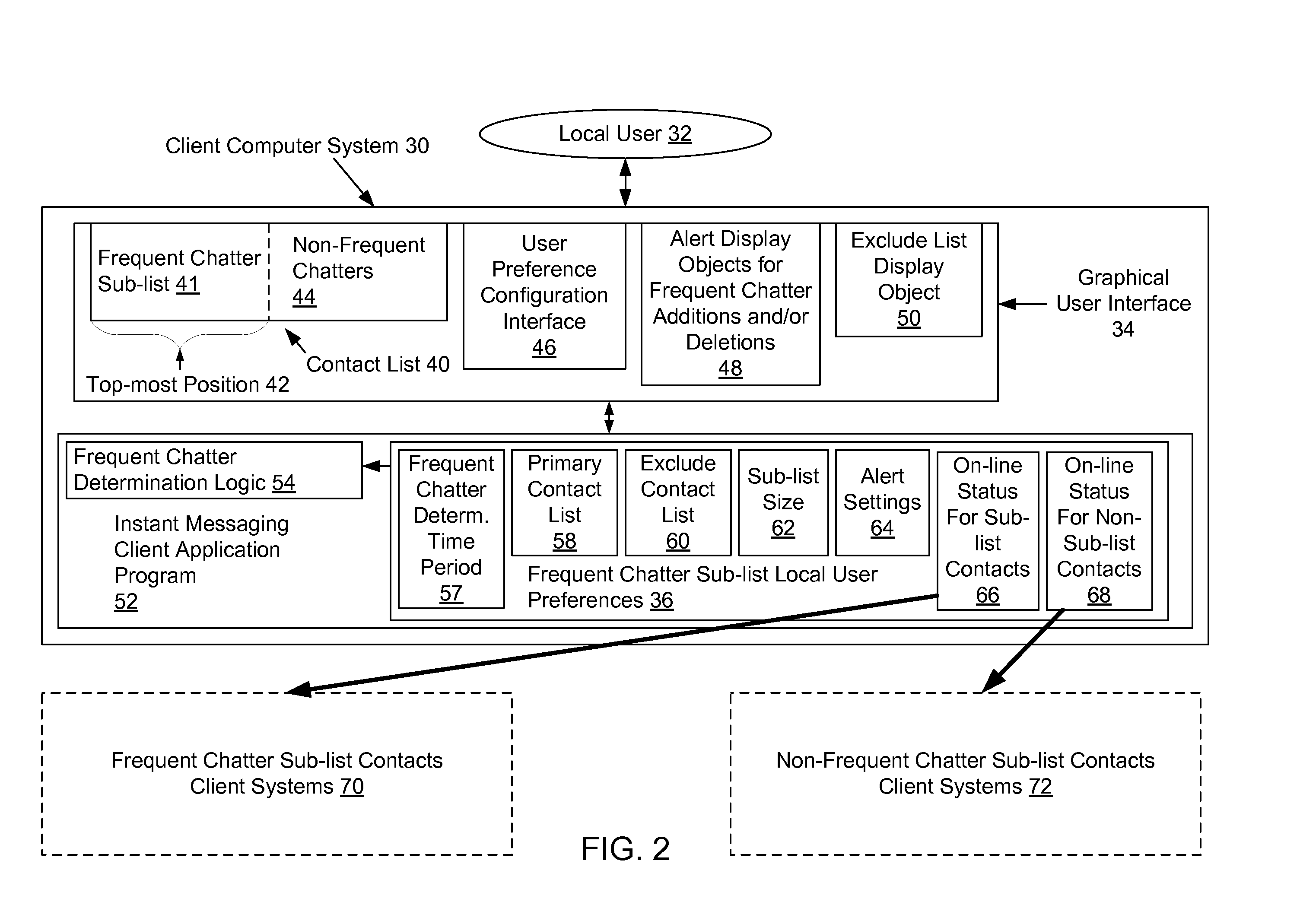Method and system for providing auto-sorting of collaborative partners or components based on frequency of communication and/or access in a collaboration system user interface
a collaboration system and user interface technology, applied in the field of user interfaces for collaborative software systems, can solve the problems of time-consuming for users, insufficient features, and inability to find a particular contact in the contact list to start an instant messaging session, and achieve the effect of convenient user-side searching for a particular collaborating partner and/or componen
- Summary
- Abstract
- Description
- Claims
- Application Information
AI Technical Summary
Benefits of technology
Problems solved by technology
Method used
Image
Examples
Embodiment Construction
[0022]FIG. 1 is a block diagram showing an illustrative embodiment of the disclosed system. As shown in FIG. 1, the disclosed system operates to monitor Component Accesses and / or Collaborative Partner Collaborations 10 over a configurable time period. For example, the monitoring of the Component Accesses and / or Collaborative Partner Collaborations 10 is performed in the embodiment of FIG. 1 by the Auto-Sort Logic 12. The Auto-Sort Logic 12 may be embodied by a software program executing on one or more computer systems, such as on a client computer system associated with a local user, and / or distributed among one or more communicably connected server systems.
[0023]The Component Accesses and / or Collaborative Partner Collaborations 10 may, for example, include communications between collaborative partners, such as communications among collaborating users including the local user, and / or component accesses performed by collaborating partners (e.g. the local user and / or other members of ...
PUM
 Login to View More
Login to View More Abstract
Description
Claims
Application Information
 Login to View More
Login to View More - Generate Ideas
- Intellectual Property
- Life Sciences
- Materials
- Tech Scout
- Unparalleled Data Quality
- Higher Quality Content
- 60% Fewer Hallucinations
Browse by: Latest US Patents, China's latest patents, Technical Efficacy Thesaurus, Application Domain, Technology Topic, Popular Technical Reports.
© 2025 PatSnap. All rights reserved.Legal|Privacy policy|Modern Slavery Act Transparency Statement|Sitemap|About US| Contact US: help@patsnap.com



